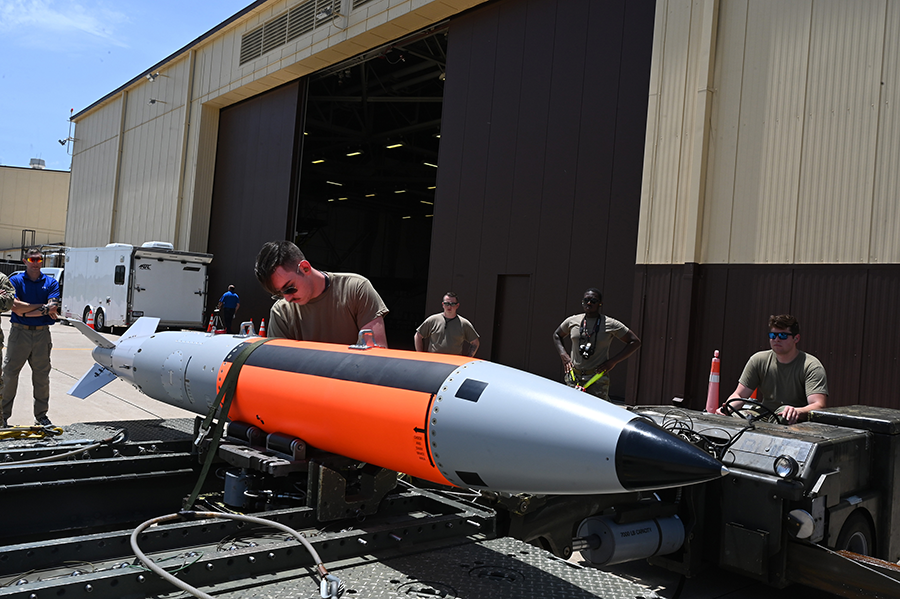“For half a century, ACA has been providing the world … with advocacy, analysis, and awareness on some of the most critical topics of international peace and security, including on how to achieve our common, shared goal of a world free of nuclear weapons.”
U.S. to Develop Unanticipated New Nuclear Bomb
December 2023
By Shannon Bugos
The U.S. Defense Department unexpectedly announced its intention to develop an additional variant of the B61 nuclear gravity bomb, to be known as the B61-13.
 “Today’s announcement is reflective of a changing security environment and growing threats from potential adversaries,” said John Plumb, assistant secretary of defense for space policy, in an Oct. 27 statement. “The United States has a responsibility to continue to assess and field the capabilities we need to credibly deter and, if necessary, respond to strategic attacks, and assure our allies.”
“Today’s announcement is reflective of a changing security environment and growing threats from potential adversaries,” said John Plumb, assistant secretary of defense for space policy, in an Oct. 27 statement. “The United States has a responsibility to continue to assess and field the capabilities we need to credibly deter and, if necessary, respond to strategic attacks, and assure our allies.”
The Pentagon acknowledged its hope that the B61-13 variant would help catalyze the stagnant retirement process of the B83 megaton gravity bomb.
“The B61-13 will provide the President with additional options against certain harder and large-area military targets, even while the department works to retire legacy systems such as the B83-1,” according to a Pentagon fact sheet.
Members of Congress have strongly resisted retiring the B83, claiming the largest bomb in the U.S. nuclear arsenal at 1.2 megatons is necessary to target hard and deeply buried targets. (See ACT, November 2023.) The Trump administration contributed to this resistance with the 2018 Nuclear Posture Review, which called for retaining the B83 bomb, rather than proceeding with its planned retirement. (See ACT, March 2018.)
But the Biden administration aims to follow through on the retirement of the B83. The megaton-class bomb is “of increasingly limited utility, and retiring it does not change the hard and deeply buried target set,” Plumb told Congress last year.
“The case for the B61-13 is strange,” assessed the Federation of American Scientists in an Oct. 27 blog post. “For the past 13 years, the sales pitch for the expensive B61-12 has been that it would replace all other nuclear gravity bombs,” as well as “cover all gravity missions with less collateral damage than large-yield bombs.”
The B61-13 would be deliverable by modern aircraft and have a maximum yield similar to the 360-kiloton B61-7 variant, a massive increase when compared to the most recent 50-kiloton B61-12. The B61-12 is scheduled for initial deployment this year, replacing the 100 B61-3/4 bombs believed to be stationed across Belgium, Germany, Italy, the Netherlands, and Turkey under the NATO nuclear sharing mission.
The Defense Department emphasized that the B61-13 would not increase the overall size of the U.S. nuclear arsenal. “The number of B61-12s to be produced will be lowered by the same amount as the number of B61-13s produced,” according to the Pentagon fact sheet.
In an Oct. 24 letter to Congress, the Energy Department officially requested to amend its fiscal year 2024 budget request to cover development engineering activities for the B61-13.
Whether the request will be granted remains to be seen because Congress has yet to pass the necessary legislation to fund any department for all of fiscal year 2024.
